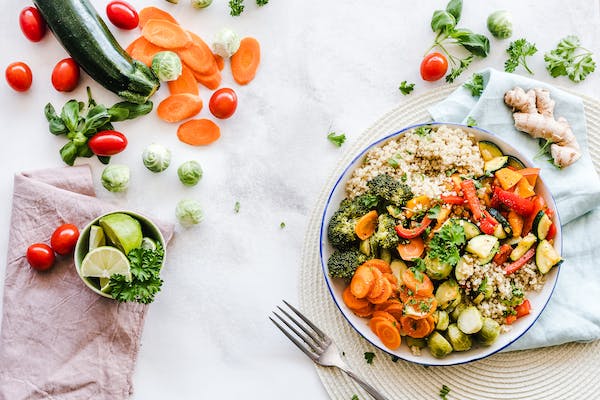Nutrition is vital for healthy bones.
Nutrition and bone, muscle and joint health are closely related. A healthy diet can help you prevent and manage osteoporosis and related musculoskeletal disorders by assisting in the production and maintenance of bone. Conversely, if you’re not getting the right nutrients, you’re at greater risk for bone, muscle and joint disease.
The critical nutrients for optimum bone health are vitamin D, Calcium, Protein, Magnesium, Vitamin B, Vitamin K, Vitamin A and Zinc. Without optimum nutrition, drug treatment and other interventions are less effective.
Two of the most important nutrients are calcium and vitamin D.
Calcium
Calcium is a major building block of bone tissue (the skeleton houses 99% of the body’s calcium stores). Calcium regulates muscle contractions, including heartbeat and making sure blood clots normally, as well as several other functions. The daily recommended allowance of calcium for an adult is 700mg.
A lack of calcium could lead to rickets in children and osteomalacia or osteoporosis in later life. Find out if you are getting enough calcium in your diet here.
Vitamin D
Vitamin D is vital as it assists your body to absorb calcium – the two go hand-in-hand.
Children aged one year and adults need ten micrograms of vitamin D daily. This includes pregnant and breastfeeding women and people at risk of vitamin D deficiency.
From about late March/early April to the end of September, most people should be able to get all the vitamin D they need from sunlight on their skin.
There are some other foods, nutrients and vitamins, besides calcium and vitamin D, that help to prevent osteoporosis and contribute to bone, muscle and joint health, including protein, fruit and vegetables, and other vitamins and minerals:
Protein
Adequate dietary protein is essential for optimal bone mass gain during childhood and adolescence. It’s also responsible for preserving bone mass with ageing. Lack of protein robs the muscles of strength, which heightens the risk of falls and contributes to poor recovery in patients who have had a fracture.
Lean red meat, poultry and fish, as well as eggs and dairy foods, are excellent sources of animal protein. Vegetable protein sources include legumes (e.g. lentils, kidney beans), soya products (e.g. tofu), grains, nuts and seeds.
Fruit and Vegetables
Fruit and vegetables contain an array of vitamins, minerals, antioxidants and alkaline salts – some or all of which can have a beneficial effect on bone. Studies have shown higher fruit and vegetable consumption is associated with beneficial effects on bone density in older men and women.
Other vitamins and minerals
Magnesium
Magnesium plays a vital role in forming bone minerals. Magnesium deficiency is rare in well-nourished populations. Older people are sometimes at risk of mild magnesium deficiency, as magnesium absorption decreases with age. Excellent sources of magnesium include green vegetables, legumes, nuts, seeds, unrefined grains and fish.
Vitamin A
The role of vitamin A in osteoporosis is controversial. Vitamin A is a compound called retinol in foods of animal origin, such as liver and other offal, fish liver oils, dairy foods and egg yolk. Some plant foods contain a precursor of vitamin A, for example, green leafy vegetables and red and yellow coloured fruits and vegetables. Consumption of vitamin A in amounts well above the recommended daily intake may adversely affect bone.
Vitamin K
Vitamin K is required for the correct mineralization of bone. Some evidence suggests low vitamin K levels lead to low bone density and increased fracture risk in older people. Vitamin K sources include leafy green vegetables such as lettuce, spinach, cabbage, liver and some fermented cheeses and soya bean products.
Zinc
This mineral is required for bone tissue renewal and mineralization. Severe deficiency is usually associated with calorie and protein malnutrition and contributes to impaired bone growth in children. Milder degrees of zinc deficiency have been reported in older people and could contribute to poor bone status. Sources of zinc include lean red meat, poultry, whole grain cereals, pulses and legumes.
B Vitamins and Homocysteine
Some studies suggest high blood levels of the amino acid homocysteine may be linked to lower bone density and a higher risk of hip fracture in older people. Vitamins B6 and B12, as well as folic acid, play a role in changing homocysteine into other amino acids for use by the body so that they might play a protective role in osteoporosis. Research is ongoing on whether supplementation with these B vitamins might reduce fracture risk.


2 Comments